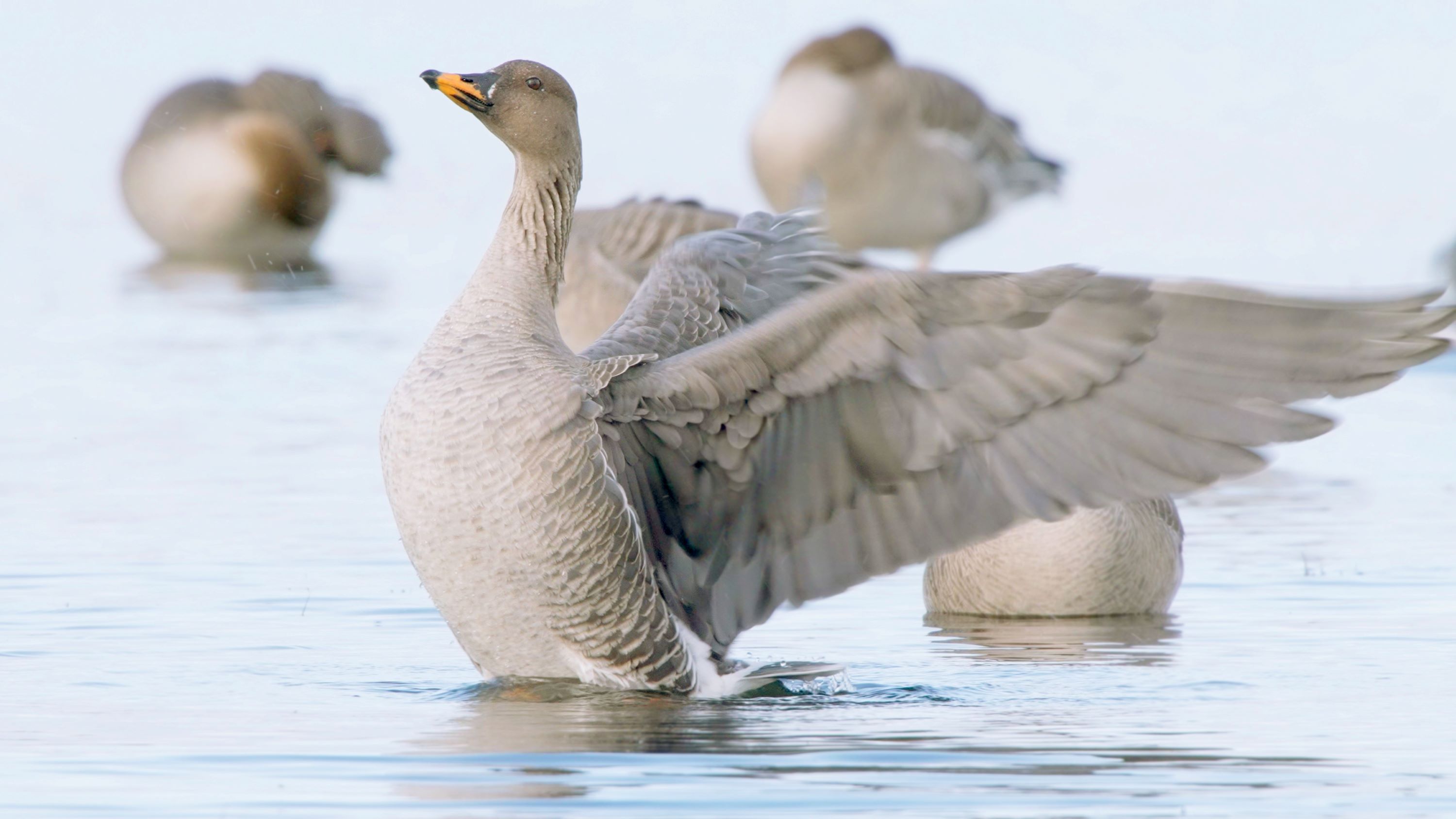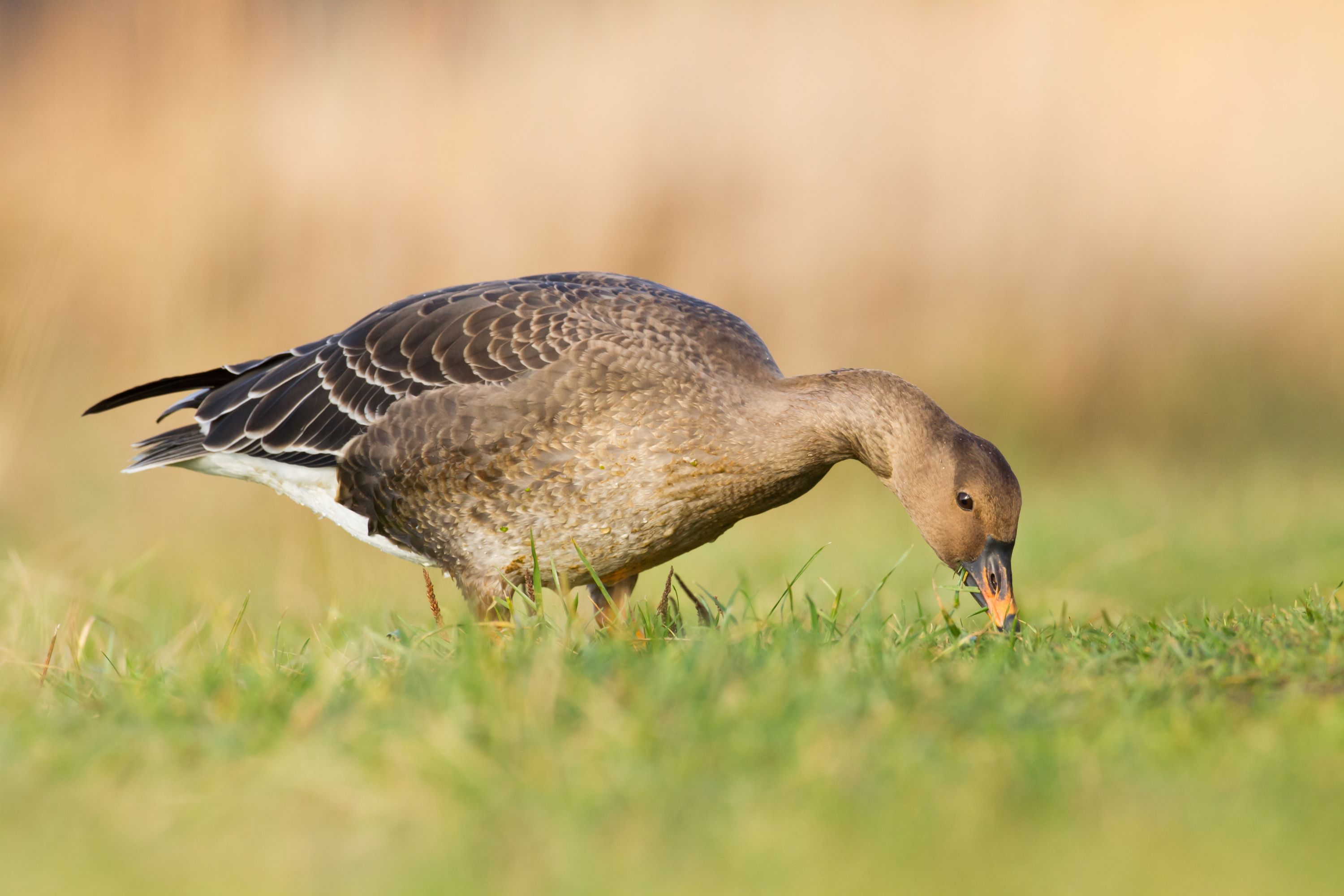
The Bean Goose: A Distant Wanderer of the Skies
Introduction
The Bean Goose, a species not found in the familiar landscapes of Utah, is a bird that epitomizes the diversity and wonder of the avian world. Native to parts of Europe and Asia, this goose represents the far-reaching connections of global bird migrations, offering a glimpse into the lives of species beyond local ecosystems.
Description and Identification
The Bean Goose (Anser fabalis) is a medium to large-sized goose, notable for its elongated neck and primarily brown plumage. This species is characterized by its orange legs and bill, the latter of which often shows a black tip. Bean Geese are separated into two main groups: the Taiga Bean Goose, larger with a longer bill, and the Tundra Bean Goose, smaller with a stubbier bill.
Habitat and Range
Bean Geese breed in the northern reaches of Europe and Asia, choosing the taiga and tundra zones for their nesting grounds. Their preferred habitats include marshes, wet meadows, and riverbanks. In winter, they migrate to milder climates in Europe and Asia, where they can be found in agricultural fields and wetlands.

Migration Patterns
The migratory journey of the Bean Goose is an impressive annual event. These birds travel substantial distances to reach their wintering grounds, forming large, noisy flocks that navigate using traditional routes. Their migration is marked by a change in habitat from the remote northern breeding areas to more populated wintering areas.
Behavior and Social Structure
Bean Geese are highly social birds, especially outside the breeding season. They form large flocks during migration and in wintering areas, facilitating a collective approach to finding food and avoiding predators. During the breeding season, however, they become territorial, with pairs maintaining a nesting site away from others.
Diet and Foraging
The diet of the Bean Goose predominantly consists of grasses, sedges, and, true to their name, beans. They are known to feed in agricultural fields, where they can cause damage to crops, leading to conflicts with farmers. During the breeding season, their diet also includes a higher proportion of roots, tubers, and small invertebrates.
Breeding and Nesting
The Bean Goose breeds in remote northern areas, with females laying 4-6 eggs in a ground nest. Both parents share the responsibility of incubating the eggs and raising the young. The goslings are precocial, able to feed themselves shortly after hatching, though they remain under parental care for several weeks.
Conservation Status
The Bean Goose is currently listed as a species of Least Concern by the IUCN. However, it faces threats from habitat loss, especially in its wintering grounds, and changes in agricultural practices. Conservation efforts focus on protecting crucial wetland habitats and ensuring sustainable agricultural practices.
The Bean Goose and Global Birdwatching
While the Bean Goose does not grace the skies of Utah, it represents the vast and interconnected world of bird migration. For birdwatchers, understanding the life of such distant species enriches their appreciation of global ecological systems and the need for international conservation efforts.
Conclusion
The Bean Goose, with its distinct migratory habits and far-flung habitats, is a testament to the incredible adaptability and resilience of birds. For those in regions where the Bean Goose is not seen, such as Utah, the species symbolizes the broader narrative of avian life, stretching across continents and cultures. It reminds us of the importance of conserving diverse habitats worldwide to support the intricate web of migratory bird life.